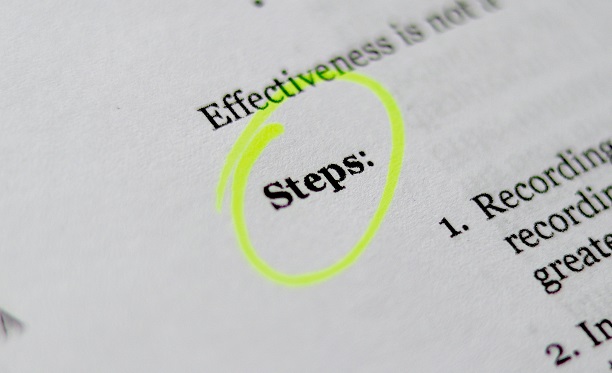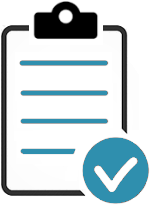A communication procedure describes the specific requirements and methods for the internal and external communication of quality-related issues, and the establishment of lines of communication with various parties that affect quality.
Contents
There are two common causal factors that contribute to poor-quality, in any industry. The first factor is bad communication; where something like an instruction or specification has not been understood. The second factor is where there has been a lack of communication, and something has not been done or omitted.
The communication procedure should go into detail on what quality-related issues you should communicate, when you should communicate, who communicates, the methods of communication, and finally; who is responsible for communication.

Communication is a very important part of any organization's quality management system (QMS), and a communication procedure provides a common, structured process that everyone within the organization can follow.
The communication procedure should provide an effective feedback channel between the organization and its customers, stakeholders, and employees by ensuring that the quality-related information that needs to be communicated is:
Our Communication Procedure is proven to work.

Customer communications that include orders, contracts, quotations and requirements are often defined by a separate Contract and Quotation Review Procedure (Clause 8.2), while the handling of customer complaints or feedback, and returns is often defined by separate Customer Feedback and Return Procedures (Clause 9.1.2).
Communications with suppliers (Clause 8.4) should seek to ensure the effective management of the interfaces between design, procurement and production by effective communication to all members of the supply chain.
As such, it is essential that the scope of any communication procedure describes the organizational approach towards internal and external communication that ensures the following requirements from ISO 9001:2015, Clause 7.4 are considered:
We suggest that you develop a communication matrix, see Step 5 below, that captures the bold points above as headings in a schedule against a list of quality-related information that your organization has identified as something it need to communicate and share.
This video summarizes ISO 9001 Communication in 6 minutes:
https://www.youtube.com/watch?v=DalFwXrneUU

All industries need to treat quality-related issues in the same way they manage health and safety in terms of clear ownership of the results, good lines of communication, good training, effective supervision, and robust reporting mechanisms.
The Quality Manager has the overall responsibility for ensuring that information and data about performance and the effectiveness of the quality management system is reported to Top management.
This includes the distribution of all applicable documents, reports and records to appropriate functions and stakeholders.
The Quality Manager is often responsible for:
The Quality Manager should work closely with the Production Manager and Operations Manager on day-to-day issues, keeping in close communication with other stakeholders including the Design Team, Health and Safety Manager, Risk Manager, and Procurement Manager.
Ensure that responsibilities and authorities are defined by a detailed job description for each position, while the organization’s hierarchy should be documented and communicated via an organization chart.
Our Communication Procedure is proven to work.

A description of the communication channels and the channels that your organization uses can be helpful. Your organization should define adequate communication channels to ensure that quality-related information is exchanged among the different levels of the organization, and with external interested parties, including contractors, partners and suppliers.
Analyze the company’s current communication mechanism to see if the customer is receiving what they paid for. Does a particular department have all the information they need to deliver their service or product?
If not, then which department needs to be updated and why? What are your customers saying about you after receiving your product or service? If there are any complaints, then what is being done to resolve them?
Identify all the internal interested parties to whom information will communicated to and the types of information to be shared internally. This is a crucial step since it might not work without their active support.
After all, the entire QMS depends on communication. These stakeholders could be distributors, suppliers, representatives, or customers. Identify their requirements and the information to be shared internally, such as:
Engage with your Employees and communicate information relevant to the quality management system amongst all levels and functions, including information on any changes, as appropriate, and establish a mechanism to enable all personnel performing work under the organization’s control to contribute to continual improvement.
As well as briefing employees during introductory presentations, try using a combination of other methods to promote and communicate awareness, such as posters placed on notice boards and leaflets with pay-slips, etc.
Use team meetings and briefing sessions to inform Employees of the plan, how they will be expected to contribute. Issues pertaining to the quality management system that should be communicated include:
Designate a person responsible for providing regular updates, either department heads, team leaders, etc. in the business. Effective communication media for these types of sessions might include:
Invariably, Auditors will wish to determine if the quality policy is communicated and understood, by interviewing personnel at all levels. Although the exact content of the quality policy does not need to be recited by each Employee, their awareness of the quality policy and how their job affects the company’s objectives should be communicated and reinforced using multiple media and communication channels.
This does not require your Employees to memorize the quality policy but it does mean that all Employees need be aware of it, know where it may be found (e.g., a hard copy might be placed on the notice board, or electronically, via the intranet) and be able to paraphrase, or give an interpretation as it applies to their work.
If the Employees do not know what their measurable quality objectives are, or do not know what the organizational objectives are which they have a direct effect upon in terms of product quality, the Auditor would be further directed to evaluate Top management’s communication of the quality policy and objectives.
Check that Top management communicate with Employees, concerning the relevance and importance of the quality policy and objectives, whether in the sense of encouraging all Employees to contribute to the attainment the quality policy and objectives, or to thank Employees for improved performance.
Lessons learnt from incident investigations and problem-solving exercises should be communicated to all Employees in the organization, and these lessons should be fed back and incorporated into training, design and other areas to reduce the likelihood of reoccurrence.
Externally, your organization needs to communicate as required by its statutory and regulatory obligations. Additionally, organizations may choose to communicate on other issues, as appropriate. The process has to ensure that all received communications are responded to appropriately.
All external communications regarding your organization’s quality policies, objectives, targets, and other quality-related issues should be forwarded to the Quality Manager. All formal quality management system communications should be authorized prior to release.
Responses to external communications should be recorded if they are transmitted by email or letter. In each case the response will be stored as a record. All external communication records should be stored in accordance with your organization’s Documented Information Procedure (7.5).
Record details of relevant communications with external parties regarding health and safety issues. Relevant communication includes site visits and the receipt of health and safety related documentation. External parties can include Clients, HSE, EA, local authorities, or the general public.
The appropriate external communications may establish quality, environmental and safety credibility and satisfy stakeholder requests by presenting objective information on the organization’s performance via:
Ensure the interfaces between external stakeholders are identified and monitored to avoid any communication breakdown by identifying all the external interested parties to whom quality-related information needs communicated to; e.g., customers, stakeholders, suppliers, and business partners, etc.
The allocation of key account managers will help to maintain relationships with external stakeholders and regular review meetings will help maintain focus.
Through the provision of appropriate methods, time, training and resources necessary for effective communication, your organization will enable ‘two-way’ communication as appropriate in order to verify understanding and capture feedback.
Create a communication procedure that will help all departments within the organization communicate effectively internally and externally. The Quality Manager needs to ensure that all team leads use this procedure to share information across departments.
Start implementing the procedure by making sure all departments work effectively with each other. Review it at regular intervals to find points that could potentially lead to failure. The Quality Manager should monitor communication within the organization to ensure effectiveness.
A communication matrix will help you to document and comply with the requirements ISO 9001:2015, Clause 7.4. The communication matrix should be developed to describe the flow of information to various interested parties, and the measures your organization plans to take to ensure its communication mechanisms and communication channels support its quality management activities.
| What (Quality-related information) |
When (Frequency) |
With (Audience) |
How (Media) |
Who (Owner) |
| Quality policy statement | After management review and approval | Employees | Internal intranet, Internet or email, face-to-face meetings | Top management |
| External interested parties | Email/website | |||
| Quality management objectives | After management review and approval | Employees | Controlled hard copies are shared, face-to-face meetings | Top management/Line Managers |
| Problem solving status | After receipt of Customer complaint | Customer | Email/Telephone | Quality Manager |
| Order status | On frequency as decided with customer | Customer | Email/Telephone | Marketing or Customer Services |
| Responsibilities and authorities | After management review and approval | Employees | Job descriptions, contracts and organization chart | Human Resources |
The organization must conduct internal audits in an impartial and transparent way to collect and analyse information for the purposes of its monitoring activities to ensure the communication process is effective. The responsibility for communicating the results of the audits to Top management exists with the Quality Manager.
Auditing and management reviews demonstrate that you are committed to providing quality products and services to your customers. This also shows that as an ISO 9001:2015 certified company, it is serious about quality in its aims to meet and exceed customers’ expectations. It also serves as a feedback mechanism since stakeholders can recommend improvements to the process.
Our Communication Procedure is proven to work.
The ISO 9001 communication procedure is a structured guideline for achieving quality objectives. It goes into detail about who should communicate what and when, where, how, thus providing a more organized approach for better product or service production.
Following this communication process effectively with different departments involved in the production or providing services can lead to customer-focused, successful outcomes.
Nonetheless, ensure you engage all stakeholders when designing and implementing this procedure for consistent quality delivery.
Updated: 26th February 2022
Author: Richard Keen

Richard is our Compliance Director, responsible for content & product development.
But most importantly he is ISO's biggest fanboy and a true evangelist of the standards.
Learn more about Richard

Don’t Try to Manage It All Alone!
Our ISO Auditors and Quality Manager Trainers have been in this industry for years, and since 2002 we’ve been providing thousands of small businesses and large corporations with the tools they need to get certified.
Instead of trying to create everything you need to follow this process from scratch, use ours. We have procedures, templates, checklists, process maps, forms and gap analysis tools to help you control your documented information without missing a single input or output.
Before you invest all the hours reinventing the wheel, before you spend countless dollars outsourcing the task — try our templates.
| QMS ISO 9001 |
EMS ISO 14001 |
OH&S ISO 45001 |
|
|
Communication Procedure The purpose of this procedure is to outline your organization’s guidelines and instructions for managing internal and external communication relating to the QMS. This procedure aims to provide specific requirements for the internal and external communication of quality related issues and the establishment of lines of communication with various parties. Forms & Reports also included:
>> Free Download - Control of Calibrated Equipment Procedure - this will give you a good idea of what to expect when you purchase the procedure. |
$19 USD |
|
Pay by Credit Card, Debit Card, PayPal or Apple Pay.


|
Please read our Money Back Guarantee. |
Bought by Small Businesses and Large Corporations our templates have been sold online and CD since 2002.
Used by:
The Templates are used by first-timers following our step-by-step, clause-by-clause guidance documents; and experienced Quality Managers wishing to streamline and improve their existing documentation.
The application of our templates and quality manuals is scalable and generic; regardless of the size and type of organization. The elements that form the quality management system are the same.
1. Our customizable templates save you time and money by offering a streamlined process to create your quality documentation
2. They’ve got everything you need in one simple template
3. Proven to work our templates have helped thousands of businesses big and small achieve certification
4. Documents use styles to make reformatting and rebranding a breeze
5. Our templates are generalizable for any industry or sector. The application of our templates is scalable and generic; regardless of the size and type of organization.